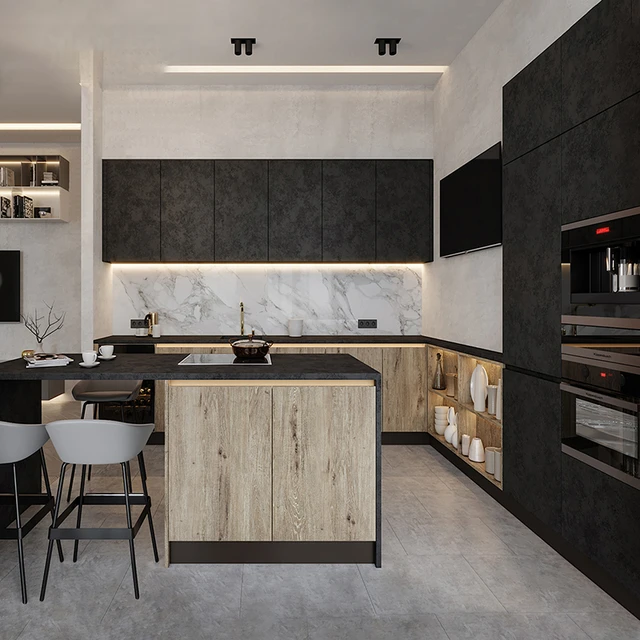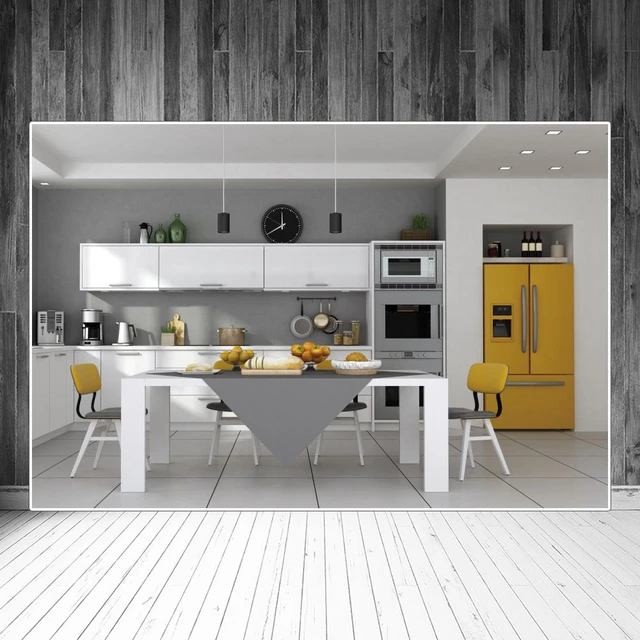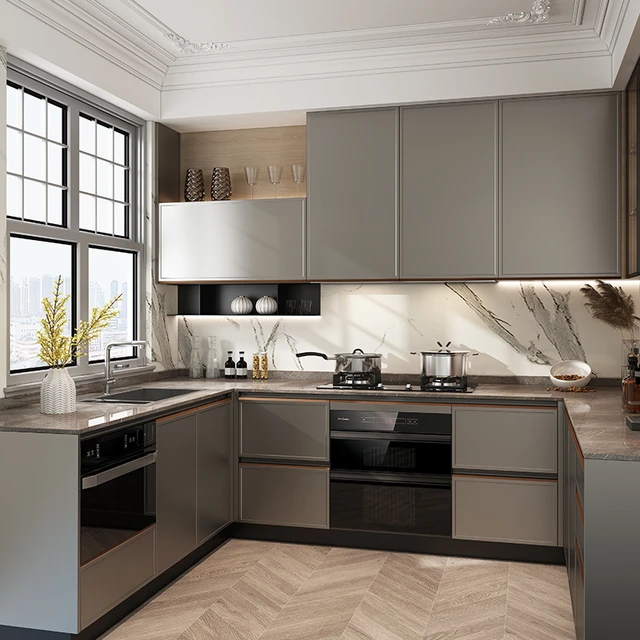 Introduction:
Introduction:
An open kitchen design is a popular choice for modern homes, as it creates a seamless flow between the kitchen, dining area, and living space. This design concept removes physical barriers, such as walls or partitions, allowing for a more spacious, light-filled, and inclusive environment. In this comprehensive guide, we will delve into the features, benefits, and considerations of an open kitchen design. From maximizing space and natural light to promoting social interaction and functional efficiency, we will cover everything you need to know to create a stunning and functional open kitchen.
Some design trends and reasons why open kitchen designs are favored:
Open kitchen designs has become a popular trend in contemporary home design. Here are some design trends and reasons why open kitchen designs are favored:
Design Trends:
Seamless Integration: Open kitchen designs focus on seamlessly integrating the kitchen with the surrounding living or dining areas. This design trend promotes a cohesive and harmonious flow between different spaces, allowing for social interaction and easy entertaining.
Kitchen Islands or Peninsulas: Many open kitchen designs incorporate a central island or peninsula. These features serve as a functional and visual focal point, providing additional countertop space, storage, and seating options. Kitchen islands or peninsulas also help define the kitchen area within the open concept layout.
Natural Light: Open kitchen designs often emphasize natural light by incorporating large windows, skylights, or glass doors. This trend enhances the overall brightness and spaciousness of the kitchen, creating an inviting and airy ambiance.
Minimalist Aesthetics: Many open kitchens embrace minimalist aesthetics with clean lines, sleek finishes, and clutter-free spaces. This design trend promotes a sense of simplicity, sophistication, and visual openness.
Reasons for Popularity:
Social Interaction: Open kitchen designs allow for better social interaction and connectivity between family members or guests. With the kitchen seamlessly integrated into the living or dining area, those preparing meals can easily engage with others, making cooking a more inclusive and enjoyable experience.
Enhanced Entertaining: Open kitchen designs provide an ideal setting for entertaining guests. The open layout allows hosts to interact with their guests while still being able to prepare food and drinks. This design trend creates a more inclusive and interactive atmosphere during gatherings or parties.
Visibility and Safety: Open kitchen designs offer better visibility, allowing parents to keep an eye on children playing or doing homework in the adjacent areas while working in the kitchen. This design feature promotes a sense of safety and facilitates multitasking for busy households.
Perceived Spaciousness: Open kitchen designs create an illusion of more space, making smaller kitchens appear larger. By eliminating walls or partitions, the flow and sightlines are improved, contributing to a sense of continuity and expansive feel within the entire living space.
Open kitchen design has gained popularity due to its ability to promote social interaction, enhance entertaining capabilities, improve visibility and safety, and create a perceived sense of spaciousness. This design trend reflects the modern lifestyle and the desire for a more connected and functional living environment.
 Benefits of an Open Kitchen Design:
Benefits of an Open Kitchen Design:
Enhanced Space and Light:
An open kitchen design creates an illusion of more space by eliminating walls or barriers.
Natural light can flow freely throughout the area, making the kitchen and surrounding spaces feel brighter and more spacious.
Connectivity and Social Interaction:
An open kitchen allows for seamless connectivity between the kitchen, dining area, and living space.
This design promotes social interaction, as family members or guests can engage in conversations or activities while cooking or entertaining.
Multifunctional Use:
An open kitchen design offers flexibility and versatility, allowing the space to be used for multiple purposes.
The kitchen can double as a dining area, entertainment space, or even a workspace, maximizing the functionality of the entire area.
 Considerations for an Open Kitchen Design:
Considerations for an Open Kitchen Design:
Layout and Flow:
Plan the layout carefully to ensure a smooth flow between the different areas within the open kitchen.
Consider the placement of appliances, storage, and work areas for optimal functionality and convenience.
Storage Solutions:
An open kitchen design requires efficient storage solutions to maintain a clutter-free and organized space.
Incorporate ample storage options, such as cabinets, shelves, or an island with built-in storage, to keep essentials within easy reach.
Ventilation and Odor Control:
As the kitchen shares space with other living areas, proper ventilation is crucial.
Install a powerful range hood or ventilation system to remove cooking odors, grease, and excess heat from the kitchen area.
Noise Control:
An open kitchen design may result in increased noise levels due to the lack of physical barriers.
Consider incorporating noise-reducing materials or design elements, such as rugs, curtains, or acoustic panels, to minimize sound transmission.
 Design Elements for an Open Kitchen:
Design Elements for an Open Kitchen:
Kitchen Island:
A kitchen island serves as a centerpiece and a functional element in an open kitchen design.
It provides additional countertop space, storage, and can serve as a casual dining or gathering area.
Seamless Flooring:
Choose flooring materials that create a seamless transition between the kitchen and surrounding areas.
Options such as hardwood, tile, or polished concrete can visually unite the space and enhance the open concept.
Lighting:
Proper lighting is essential to highlight different zones within the open kitchen and create a warm and inviting atmosphere.
Incorporate a combination of ambient, task, and accent lighting to suit various activities and moods.
Color and Material Selection:
Select colors and materials that harmonize with the overall design and adjacent spaces.
Consider using cohesive color palettes and complementary materials to create a visually cohesive and unified open kitchen.
Maintenance and Privacy Considerations:
Cleaning and Maintenance:
An open kitchen design may require extra attention to maintain cleanliness and organization.
Regular cleaning, decluttering, and proper storage are essential to keep the space looking tidy and inviting.
Privacy:
Consider privacy needs when designing an open kitchen, especially in relation to neighboring spaces or bedrooms.
Options such as sliding doors, curtains, or privacy screens can be used to create separation or visual barriers when necessary.
 Conclusion:
Conclusion:
An open kitchen design offers numerous advantages, including enhanced space, connectivity, and multifunctional use. By carefully considering layout, storage solutions, ventilation, and noise control, you can create an open kitchen that seamlessly integrates with surrounding living areas. Incorporating design elements such as a kitchen island, seamless flooring, proper lighting, and cohesive color schemes ensures a visually appealing and functional space. With proper maintenance and consideration for privacy needs, an open kitchen design can transform your home into a welcoming and stylish gathering space that facilitates social interaction and culinary enjoyment.


